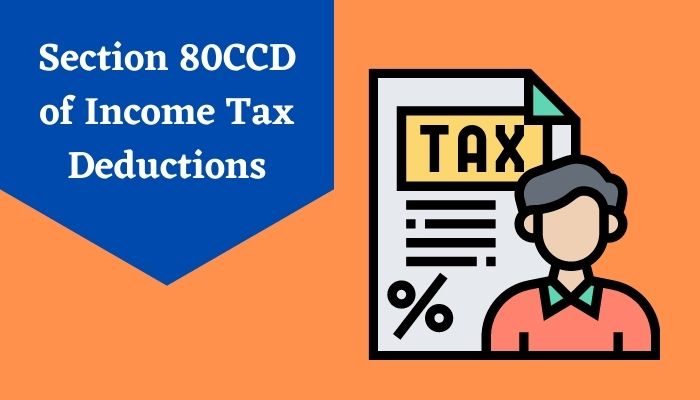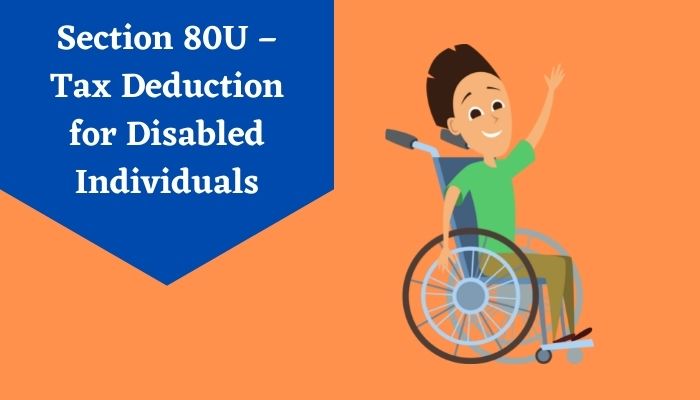Section 80CCD of Income Tax Deductions
If you are a citizen of India, then it is your responsibility to pay your income tax in an accurate and timely manner. This will ensure the proper economic growth of the country. Thankfully, the government has also made several provisions in the Income Tax Act of 1961 for the people of India to reward individuals who pay their taxes in India. These provisions provide the option of claiming deductions for the taxpayers.
One of the most popular deductions under the Income Tax Act of 1961 is Section 80CCD. Do you want to learn more about these deductions? If yes, then you are in the right place as we are going to take you through everything that you need to learn about deductions through Section 80CCD of the Income Tax Act.
What is Section 80CCD of the Income Tax Act?
Section 80CCD relates to the deductions that are available to individuals against contributions that are made to the Atal Pension Yojana (APY) and the National Pension Scheme (NPS). All contributions made by the employers towards the NPS, which is a notified pension scheme from the Central Government, are also included under this section.
Understanding the National Pension Scheme Under Section 80CCD
The NPS was introduced by the Central Government to provide the benefit of an organization pension scheme for Indian citizens. You might be interested to learn that the NPS was meant for government employees initially but it was later opened up for private-sector employees and self-employed individuals.
The most basic motive behind NPS is to help individuals create a retirement corpus and receive a fixed monthly payout to help them lead a more comfortable life. Other highlights of the NPS scheme are mentioned below.
- One must contribute to the NPS until the age of 65 years. It is mandatory for employees of the Central Government and is optional for other individuals
- To be eligible for deduction under the NPS Tier 1 Account, one must contribute a minimum of INR 6,000 per annum or INR 500 per month
- To be eligible for deduction under the NPS Tier 2 Account, one must contribute a minimum of INR 2,000 per annum or INR 250 per month
- One can choose from various investment options like government bonds, equity funds, and government securities
- Partial withdrawals of up to 25% of the contribution made by an individual are allowed. This is also subject to certain conditions
- One can withdraw up to 60% of the corpus as a lump-sum payout and invest the remaining 40% in an annuity plan
- It is one of the cheapest equity-linked investment options that are available in the market
The Categories of Section 80CCD
It should be noted that Section 80CCD has been divided into two subsections. These subsections provide clarity regarding the available deductions for income tax. One of these sections deals with the rules about tax deductions that are available for salaries and self-employed professionals and the second section focuses on the contributions made by the employer towards the NPS.
Let’s look at both of these sections in detail now.
Section 80CCD (1)
As mentioned earlier, this subsection defines the rules related to income tax deductions that are available to individuals for all contributions made to the NPS. This is irrespective of the fact whether the contribution has been made by a government employee, a self-employed individual, or a private employee.
The provisions applicable under this section apply to all Indian citizens who are contributing to the NPS. These individuals should also be between the ages of 18 years to 65 years. This also applies to NRIs.
The maximum deduction allowed under this section is 10% of the salary or 10% of the gross income of an individual. This limit has been increased for self-employed individuals from the financial year of 2017 – 2018.
Section 80CCD (2)
The provisions under Section 80CCD (2) come into force when an employer is contributing to the NPS of an employee. An employer can choose to make this contribution along with contributions made towards PPF and EPF.
It should be noted that the contributions made by the employer can be equal to or higher than the contribution made by the employee. This section is only applicable for salaried individuals. And one can claim deductions up to 10% of the salaries.
Till now we have talked about a lot of different aspects related to Section 80CCD of the Income Tax Act. Let’s try to understand that through a few examples. Let’s assume that Mr. A is a central government employee and he contributes INR 70,000 to the NPS account. The salary structure for Mr. A is given below.
Basic Salary: INR 2,20,000
Dearness Allowance: INR 80,000
Other Allowances and Perquisites: INR 2,00,000
Investments under Section 80C: INR 80,000
On the basis of this information, it can be said that Mr. A can claim only INR 42,000 under Section 80CCD (1). Similarly, if Mr. B is also a central government employee and his total contribution to the NPS account is INR 60,000. Out of this amount, 50% of the amount is contributed by Mr. B and 50% of the contribution is made by his employer. The salary structure of Mr. B is given below.
Basic Salary: INR 2,20,000
Dearness Allowance: INR 80,000
Other Allowances and Perquisites: INR 2,00,000
Investments under Section 80C: INR 80,000
According to this, we can state that Mr. B can claim INR 30,000 under Section 80CCD (1). Mr. B can also claim a deduction for the employer’s contribution to the NPS account. Here, the maximum deduction allowed for an employer’s contribution is 10% of the basic and dearness allowance.
This should give you a good understanding of the deductions that one can claim under Section 80CCD of the Income Tax Act. You can follow the same calculations to understand the number of deductions that are applicable to you.





























